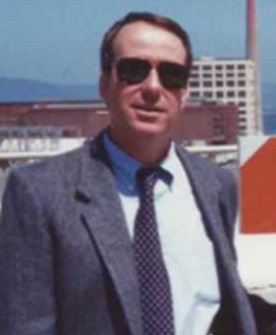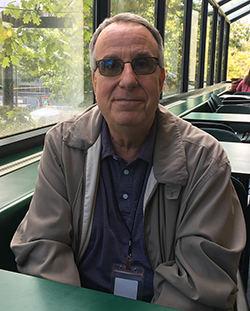To go from listening to Jim Drago’s installment in the Loma Prieta Oral History project to speaking with him today is a startling experience.
It is as if no time has passed, that the quick-witted and passionate Caltrans public information officer you heard from 1989 has been teleported, untouched and untamed, to 2019.
Drago, 66, these days helps in the Structure Maintenance and Investigations (SM&I) office in Sacramento as a retired annuitant. He has had a long and distinguished career with Caltrans, including editing Going Places magazine and serving as the department’s press secretary during the 1994 Northridge earthquake. More recently, he was the principal press contact for SM&I, and he reminisces enthusiastically about his many forays into the field to join engineers who were inspecting bridges.
He reminisces enthusiastically about a lot of things, actually, including Caltrans’ role in the immediate aftermath of the 1989 earthquake. He considers that “a heroic moment” for the department.
Thirty years ago, in the interview conducted by his colleague Chuck Morton, Drago puts his media skills on impressive display with a 10-minute riff (starting at 19:00 on the first of two tapes) that defends Caltrans, which had come under intense scrutiny due to the pancaking of the double-decker Cypress Street Viaduct in Oakland, which resulted in 42 deaths, and the collapse of one upper-deck section of the Bay Bridge, which contributed to one death.
“You really find out about people in something like this,” Drago says six weeks to the day after the Oct. 17, 1989, earthquake. “I mean, you can clearly demonstrate who can handle pressure, who can be counted on to respond, and who can’t.
“And I think, in that vein, that Caltrans really deserves an A-plus because I would say the vast majority of our people were there. And they could be counted on. And a lot of our colleagues down in District 4, who let’s face it, I think very rightly so, would have been concerned about their own house and their own family, bit the bullet and got out there and could be counted on.
“Who knows how many lives were saved because they were able to do that. Because they were the professionals that we’ve always known they were.”
"You really find out about people in something like this. I mean, you can clearly demonstrate who can handle pressure, who can be counted on to respond, and who can’t. And I think, in that vein, that Caltrans really deserves an A-plus because I would say the vast majority of our people were there."
Later in the riff, Drago recounts a press conference held shortly after the earthquake.
“We had one reporter who said, basically, accused us of having the blood of 40-plus people on our hands,” Drago says. “I told him he was crazy! I said you, this reporter, (are) just as guilty as we are. And you’re not guilty at all!

Jim Drago, 1990
“See, that’s not the question. Everything was done to standard. If we’d have thought for one minute there was a problem with any bridge falling down, we would close it! We’ve been doing that for 50 years!”
At that same media event, Drago recalls, a reporter asked Caltrans’ chief bridge engineer at the time, James E. Roberts, a question like, " ‘What gives you the right to sit here and say the system is in good shape? Or that the structures are safe?’
“And Roberts looked at me and says, ‘I’ve been a bridge engineer for 37 years! When I sign plans, I put my license on the line. How many of you other people, when you write a story, do you put your license on the line? You don’t have one! See, I’m taking the ultimate risk.’
“As are all of his people, as are all of the people in District 4 … and I think that has really come out and has been validated.”
Does Drago ever think back on the 1989 earthquake?
“Whenever there’s a disaster, I always think about it,” he said in May. “Whenever I see the new bridge, I think about it.”


